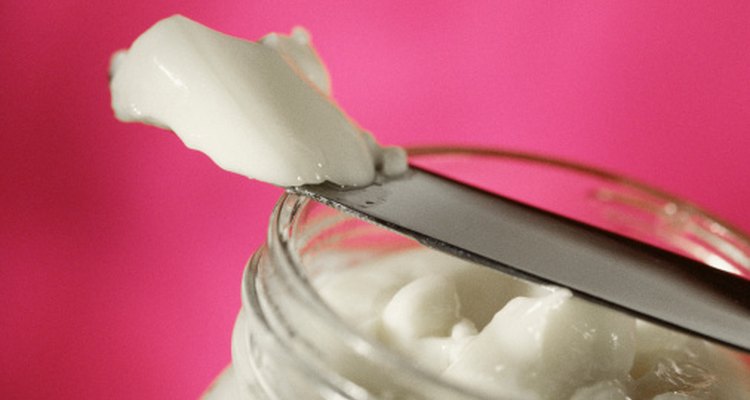
Food emulsifiers prevent oil and water from separating in foods like mayonnaise, baked goods and dairy products. If emulsifiers are not added to these foods, the oil settles on top of the water and solid ingredients. According to the Food Additives website, an emulsifier is a molecule that consists of one oil-friendly and one water-friendly end. These contrasting ends act like an adhesive that stick oil and water together. Emulsifiers also make foods look and taste appealing.
History of Emulsion
Ancient Greeks used emulsifiers like beeswax when making cosmetics; however, the first recorded use of using emulsifiers as food additives date back to the 19th century; according to Food-Info, egg yolks were added to food as a stabilizer during that time. In the 1920s, manufacturers soon found that soybean derivatives were more stable than egg yolks. By 1936, ice cream makers used emulsifiers in their products. Emulsifiers now play a major role in the production of many processed foods.
How Do Emulsifiers Work?
Emulsifiers are part of a group of compounds called surfactants. Surfactants, also called surface active agents, change the surface properties and surface tension of solids and liquids, according to Food Processing Technology. It adjusts tension to keep oil and water from separating. The molecular structure of emulsifiers includes two polar ends: hydrophilic (water loving) and hydrophobic (water repelling). When oil and water are mixed together, oil gravitates toward the water-repelling pole and water heads toward the water-loving pole. The emulsifier, therefore, keeps the two ingredients together in the emulsion.
Natural Emulsifiers
Natural emulsifiers contain proteins and phospholipids, fat soluble phosphates that suspend in water. Phospholipids are fundamental building blocks of cellular membranes and major components of surfactants, according to Chemistry Explained. The phospholipids and proteins in natural emulsifiers bind food ingredients to one another. Common natural emulsifiers include eggs and milk. Eggs contain lecithin, the substance found in the yolk, which serves as a stabilizer in foods like Hollandaise sauce, mayonnaise and creamy salad dressings. Milk proteins help ingredients in baked goods from falling apart. Other natural emulsifiers include honey, mustard and soy lecithin.
Emulsifier Uses
Emulsifiers are commonly used in soft products like dairy products, creams and mayonnaise, but they are also used in surprising food products. Approximately 0.5 percent of all chocolate products contain lecithin or ammonium phosphate. Food-Info says these emulsifiers help chocolate candies and chocolate bars attain the proper consistency and keeps them from turning white when stored at high temperatures. Processed meats, like sausage and low-fat meats, contain emulsifiers to help hold them together. Low-fat meats need emulsifiers to help them have the same consistency as their high-fat counterparts. Without emulsifiers, these foods would not hold together and taste pleasant.
Related Articles
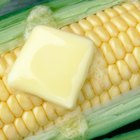
Common Food Emulsifiers
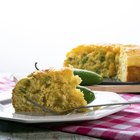
The Purpose of Buttermilk in Baking
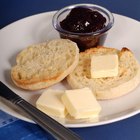
Main Ingredients of English Muffins

Cake Emulsifier Substitute

Noxzema Ingredients

Can You Substitute Vegetable Shortening ...

What Is the Chemical Composition of ...

Inert Ingredients for Dove Shampoo

What Happens When Oil Reacts With ...
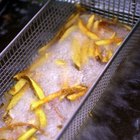
Substitutes for Groundnut Oil in Cooking
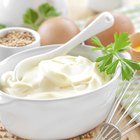
How to Replace Eggs With Mayonnaise

Vegan Alternatives to Lanolin in ...
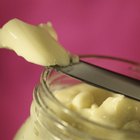
How to Fix Mayo With Broken Emulsion

Ingredients of Axe Body Wash

Can I Use Baking Powder to Thicken ...

Foods That Have Xanthan Gum

What Are the Ingredients in Elizabeth ...

Can I Make Boxed Devil's Food Cake Mix ...

List of Ingredients for Hask Placenta
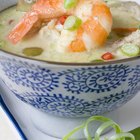
How to Keep Coconut Milk From Curdling ...
References
Writer Bio
Based in Tucson, Ariz., Cicely A. Richard has been writing since 1996. Her articles have been published in the “Arizona Daily Star” newspaper and “ForeWord Magazine.” Richard earned Bachelor of Arts degrees in English and journalism from Louisiana State University. .
Photo Credits
Jupiterimages/liquidlibrary/Getty Images